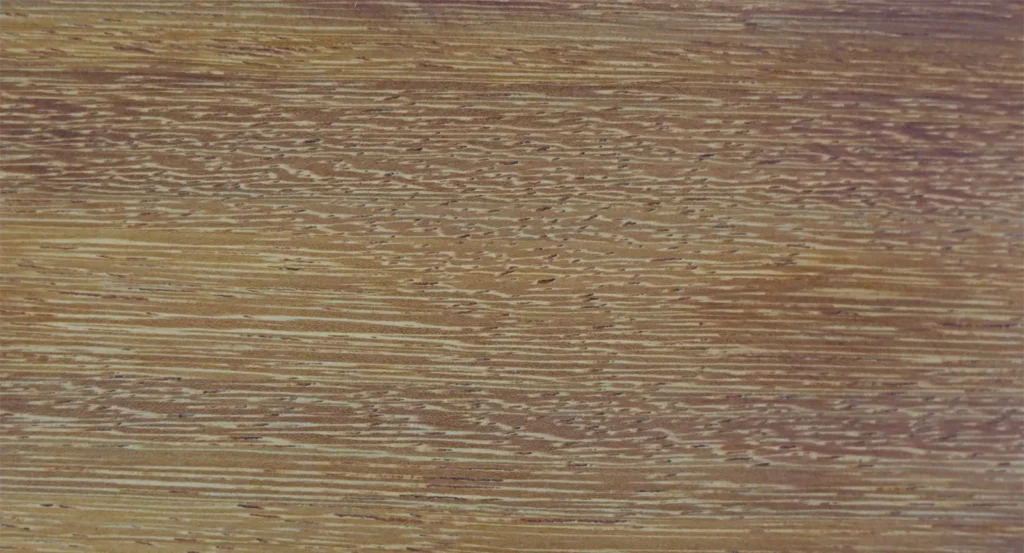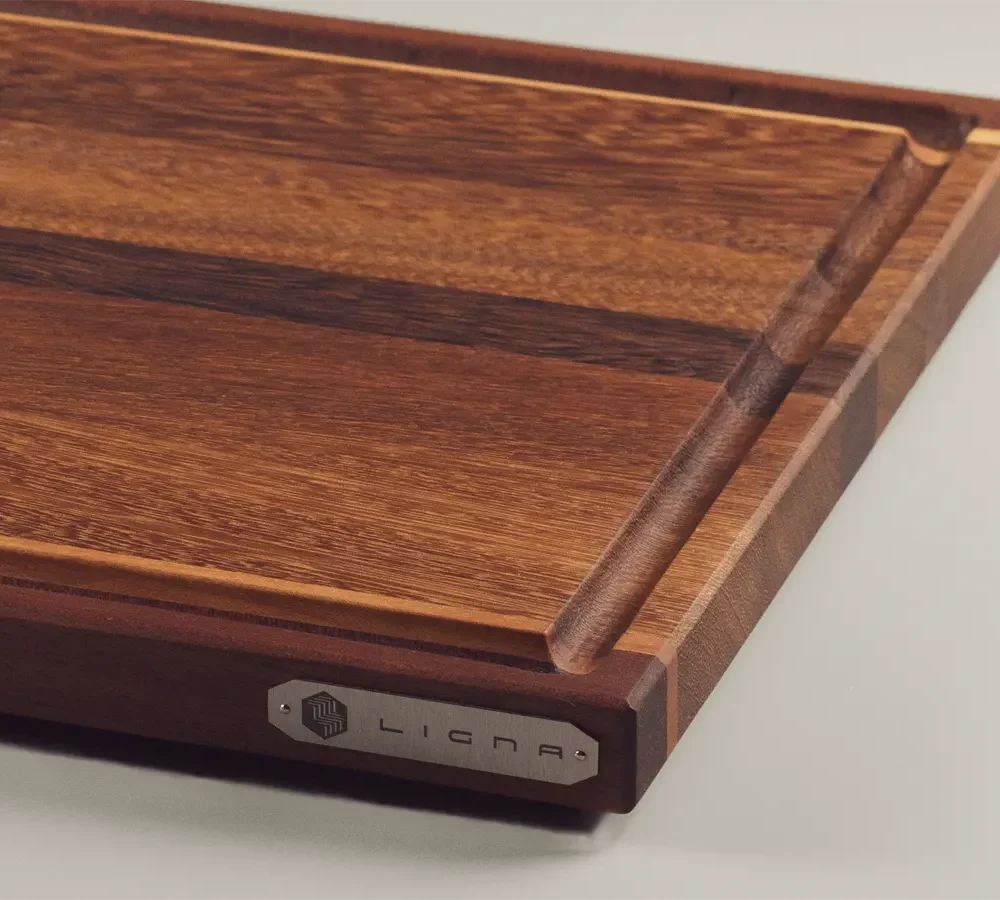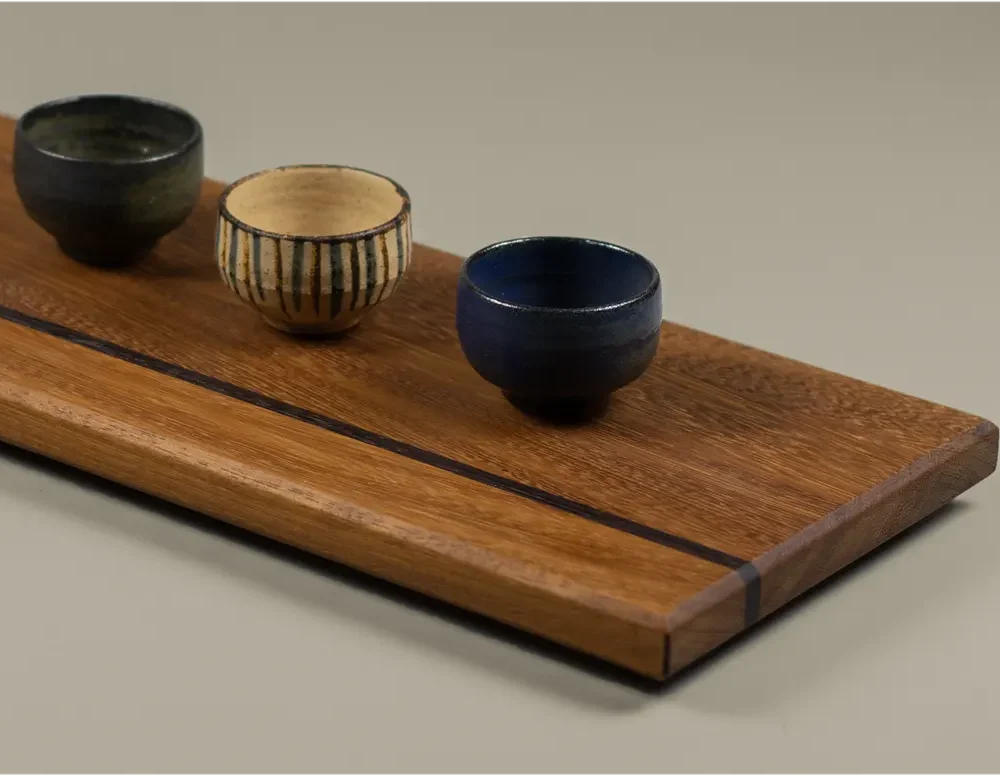
Free shipping for orders over 100€ in mainland Spain and Balearic Islands.


Iroko wood is a popular choice in carpentry and construction due to its durability, weather resistance and visual appeal.
Known as “African teak” because of its resemblance to teak in terms of appearance and characteristics, this wood is harvested from the tree Milicia excelsatree, native to tropical Africa.
Below, we explain the main properties and the most common uses of iroko wood.
Iroko is a tree native to West and Central Africa, and its tropical wood is highly prized for its natural strength and durability in outdoor conditions.
Iroko varies in color from golden yellow when freshly cut to a darker brown with age and exposure to light.
It is often compared to Burma teak because of its similar characteristics, but at a more affordable price.

Iroko wood is extremely strong, with a density ranging from 650 to 750 kg/m³. Its heartwood is naturally resistant to decay, fungi and insects, making it ideal for exterior applications without the need for intensive chemical treatments.
Iroko is known for its excellent outdoor performance. It is resistant to climatic changes and can withstand humidity and direct contact with water, making it an excellent choice for outdoor structures, garden furniture and marine constructions.
Its golden-brown color and generally interlocked or straight grain offer an attractive appearance. Over time, iroko wood tends to darken, adding character to the projects in which it is used. This aged appearance is highly prized in furnishings and finishes.
One of iroko’s most valued properties is its dimensional stability, meaning it doesn’t tend to expand or contract significantly with changes in temperature or humidity. This characteristic makes it ideal for use in flooring and wall coverings.
| Property | Approximate value |
|---|---|
| Scientific name | Milicia excelsa (synonym: Chlorophora excelsa) |
| Botanical family | Moraceae |
| Colour | Yellowish brown to golden brown (darkens with age) |
| Texture | Medium to thick |
| Grain | Usually straight, occasionally braided |
| Hardness (Janka) | 1,260 lbf (≈ 5.600 N) |
| Density | 675–860 kg/m³ (depending on moisture content) |
| Natural durability | Very high: resistant to fungi, termites and wood-eating insects |
| Dimensional stability | Good: low risk of deformation or cracking |
| Ease of work | Good, although it may contain silica that wears down tools |
| Surface finish | Accepts oils and varnishes well; darkens over time |
| Common uses | Decking, flooring, outdoor furniture, outdoor carpentry, nautical, musical instruments |
Iroko wood is gaining fame as one of the best choices for cutting boards. This is due to its unmatched moisture resistance and relative dimensional stability. Its affordable price, high availability and warm colors make it ideal for the construction of cutting boards and presentation boards.

Because of its natural water resistance, iroko wood is often used in boat building and outdoor furniture. Its ability to withstand weathering without additional treatment makes it ideal for marine and high moisture exposure environments.
Iroko is an excellent choice for highly durable flooring, both indoors and outdoors. Its wear resistance makes it suitable for high traffic areas and its stability against climatic changes makes it a popular choice for flooring and cladding in humid climates.
Thanks to its durability and attractive grain, iroko is used in the manufacture of doors, windows, and other joinery products that require strength and an attractive finish. In addition, its ease of workability and polishability make it well suited for high quality furniture.
Due to the large dimensions of the Milicia Excelsa tree, it is common to use whole iroko planks to make one-piece tables or to make epoxy river tables.
Iroko wood is an excellent choice for projects that require strength and durability, especially outdoors. Its stability against moisture, along with its attractive appearance and long service life, make it ideal for shipbuilding, outdoor furniture and high-end flooring. Although its price is higher than other woods, its performance and long-term strength compensate for the investment.

large carving board

long charcuterie board

Iroko wood comes from the Milicia excelsa tree, native to West and Central Africa. It’s known for its natural durability and strength, making it an excellent alternative to teak.
Iroko has a yellowish-brown color that darkens over time, a medium to coarse texture, and a mostly straight grain. This combination offers an attractive, warm finish for a variety of applications.
Yes. One of the greatest advantages of iroko is its high natural resistance to moisture, fungi, and insect attacks such as termites, without the need for additional chemical treatments.
Yes. Thanks to its excellent natural durability, iroko is ideal for outdoor use on terraces, garden furniture, facades, and elements exposed to the elements, even without protective treatment.
Iroko works well with hand and power tools, although it may contain silica deposits that cause increased tool wear. Carbide blades are recommended.
Iroko wood requires little maintenance. To preserve its color and prevent graying from the sun, it is recommended to apply protective oils such as teak oil once or twice a year.
Iroko can be a sustainable option if purchased with responsible forest management certifications like the FSC. It’s important to verify traceability of origin, as it comes from sensitive tropical regions.
Iroko is used in flooring, decking, outdoor carpentry, garden furniture, shipbuilding, outdoor structures, and even musical instruments due to its good resonance.
Iroko is considered an economical alternative to teak. Although it doesn’t have the same natural oils, it offers comparable durability and stability, making it highly valued in outdoor and shipbuilding.
Yes. Iroko is perfect for making both indoor and outdoor furniture thanks to its strength, stability, attractive appearance, and reliable performance in the face of environmental changes.
Copyright © 2024 Ligna Wood Design